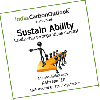You are here
Articles

Pre project assessment cost of solar thermal power plants is prohibitively high but extremely helpful for a successful project construct -- for evaluating the power purchase price and ultimate financial closure.
Pre project assessment cost of solar thermal power plants is...

Ways to Make Your Building More Energy Efficient
The house is a system. You save money and improve performance when you take cost-effective measures that reduce building loads, and then install systems and appliances that are the right size to meet the reduced loads. In...

While the APA bill of the US, whose draft was unveiled recently, is widely believed to have no chance of sailing through in 2010, it is pertinent to note its key provisions as future versions might carry several of its tenets.
While the APA bill of the US, whose draft was...

Kyoto Protocol ends in 2012. Copenhagen negotiations did not succeed. But climate change has been accepted as a major global threat. So where will the Indian industries invest in? Which GHG scheme to go for?
...

The article analyzes the challenges towards the implementation of solar thermal power projects in India in light of the National Solar Mission and accompanying policy initiatives of the Govt. of India.
The announcement of the Jawaharlal Nehru National Solar Mission (NSM) by the Prime...

Conventional resources are degrading at a fast and unrestorable pace. Non-conventional energy options are being sought. But what will be the result? LCA comes as a handy assessment tool in here.
Unregulated and uncontrolled use of the convention sources of energy are exhausting both...

Kashmir's Green Solution Fair, first of its kind environmental event, is being organized in Kashmir in the month of May 2010 by the Indian Youth Climate Network to talk about the environmental problems in the state and required actions.
Kashmir's Green Solution Fair, first of...

CO2 capture and storage (CCS) is seen as potential tool for greenhouse gas mitigation. But due to concerns like the emissions due to increased energy consumption, cost and safety, India should critically examine all the associated issues before joining the bandwagon.
CO2...

The objective of green buildings is to reduce the overall impact of the built environment on human health and the natural environment. Though its concept is being rapidly popularized in India, there are still a few hurdles that prevent mass scale adoption by project developers.
The aim of...

The mechanism of REDD has not yet been officially implemented in India, though there is considerable scope of its implementation, considering the extent of India’s forest cover. However, there is also potential for its misuse, as well as plenty of challenges.
Things are not yet bright and...

In April, 277,151 CERs (approx US$5.2m) were issued to projects in India which came from 5 projects, 3 new projects were registered with an annual potential of generating 92,570 CERs.
In April, 277,151 CERs (approx US$5.2m) were issued to projects in India which came from 5...

In context of technology transfer as a key focus of discussion between nations post Copenhagen, on April 20th, India Carbon Outlook convened a roundtable of multilateral investors, trade commissioners, policy thinktanks and corporates to discuss the global prototypes and structure of Technology...

From stadiums for the Commonwealth Games to Civic Centre buildings, today every new construction aims to be ‘green’. Greening comes at a higher capital cost, but has tremendous potential for savings, and a reduction of the strain on our natural resources in the long run.
From...

Carbon footprinting is not just a ‘in vogue’ term these days, but is largely being used to measure the sustainability of actions both at a personal and industrial front. This article explains the basic concept and the need for a low carbon living.
If someone asks you how big your carbon...

Climate policy specialists recommend GHG emission specs for correction of emission pathways. With U.S. EPA setting the GHG standards for vehicles, the effectiveness of these rules will be seen only in the future. However, such standards in the Indian context may still be far out.
